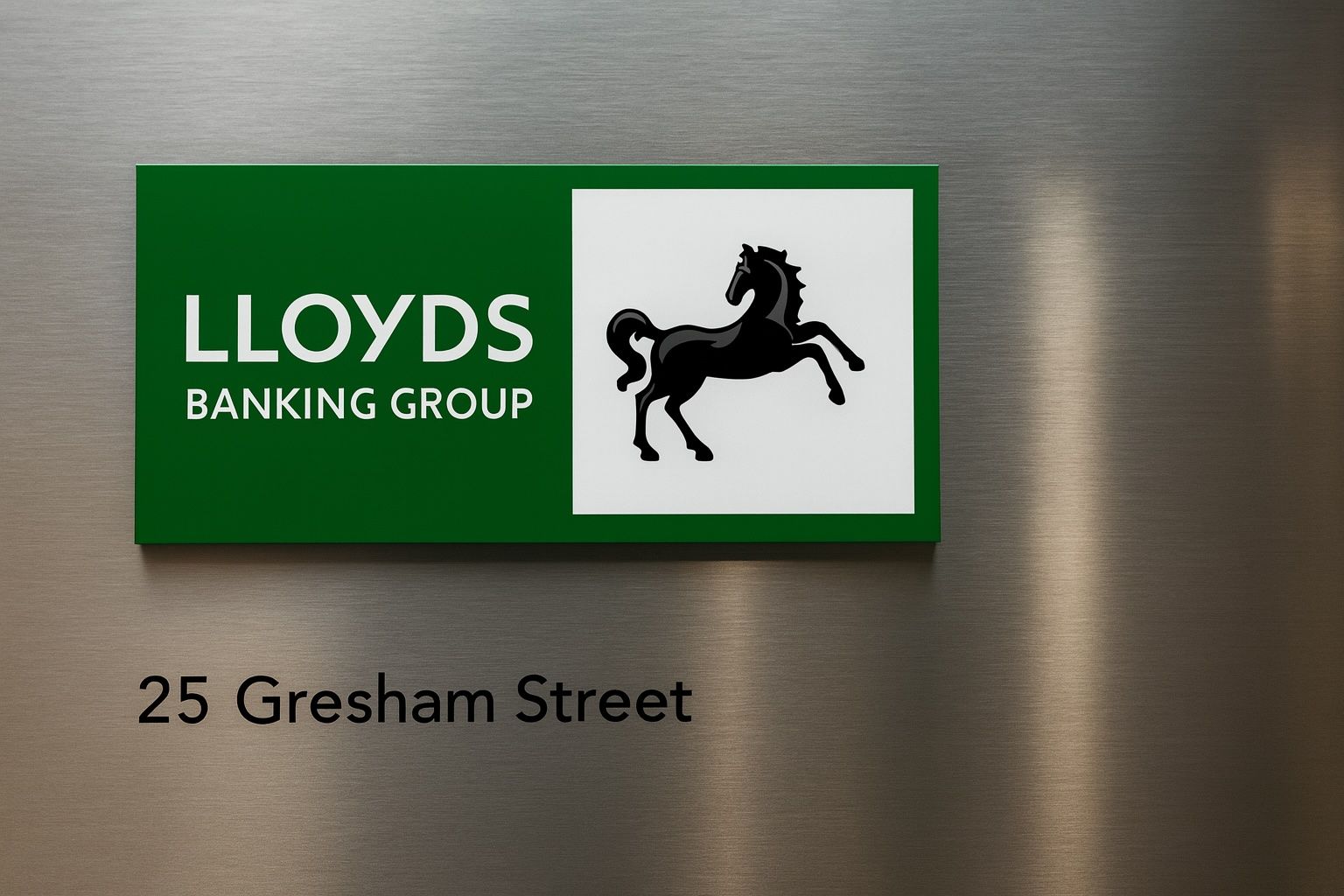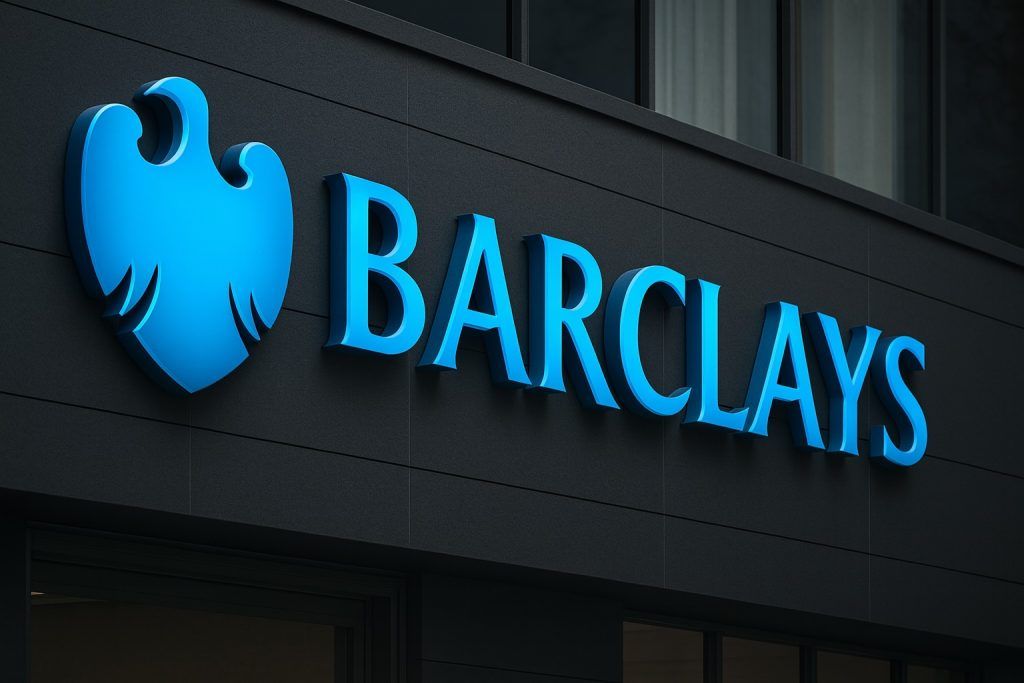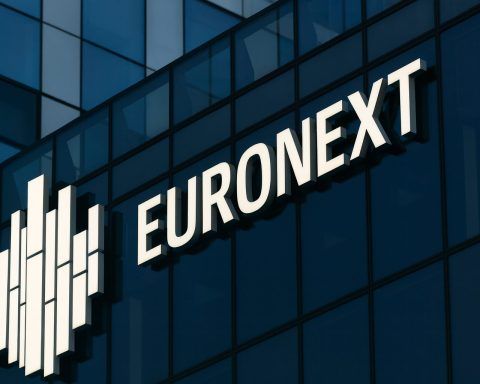Lloyds Banking Group’s share price slipped on Tuesday as fresh UK banking regulation headlines and renewed scrutiny of its fintech ambitions collided with an already risk‑off day for global markets.
At the close of trading on the London Stock Exchange on 18 November 2025, Lloyds Banking Group plc (LON:LLOY) ended around 88.93p, down about 2.1% on the day, according to composite market data. [1]
That move left the FTSE 100 lender roughly 7% below its recent 52‑week high near 95.7p and about 70% above its 52‑week low around 52.4p. [2]
Quick snapshot: Lloyds share price on 18 November 2025
Based on data from Hargreaves Lansdown and other market providers, today’s trading picture for LLOY looked roughly as follows: [3]
- Closing price: ~88.93p
- Daily move: -1.91p (‑2.1%) vs Monday’s 90.84p close
- Intraday range: traded in the high‑80s to around 90p, after opening near 88.3p
- 52‑week range: about 52.44p – 95.70p
- Market value: c. £52bn
- Valuation: mid‑teens price‑to‑earnings ratio (around 14–16x, depending on data source)
- Dividend yield: roughly 3.5–3.7% on the current share price
In New York, Lloyds’ US‑listed ADR (LYG) was indicated around $4.70, also about 2% lower in early Tuesday trading. [4]
For context, Hargreaves Lansdown data show Lloyds shares up roughly 61% over the past 12 months, one of the strongest runs among major UK banks. [5] Today’s drop is therefore a setback within what has been a powerful 2025 rally.
Why is the Lloyds share price down today?
Today’s move in Lloyds has less to do with any single company‑specific surprise and more to do with a wave of regulatory and macro news hitting UK and European banks.
1. BoE digs in on bank ring‑fencing reform
The single most important headline for UK bank stocks on 18 November came from the Bank of England’s Prudential Regulation Authority (PRA).
- A Reuters report this morning said the BoE is preparing only modest tweaks to the UK’s bank ring‑fencing regime while resisting the major overhaul that big lenders – including Lloyds – have been lobbying for. [6]
- Ring‑fencing requires banks with more than £35bn in retail deposits – such as Lloyds, HSBC, Barclays, NatWest and Santander UK – to keep everyday retail banking legally and operationally separate from riskier investment and wholesale activities. [7]
Banks had hoped the review would free up more capital and funding flexibility. Instead, the BoE is reportedly inclined to keep the core safeguards intact, considering only smaller changes such as more shared back‑office functions or limited derivatives within ring‑fenced units. [8]
Market reaction was swift:
- An Investing.com summary of the report showed major UK banks firmly in the red, with Lloyds down about 2.4%, Barclays off around 2.6% and HSBC down more than 2.5% at one point. [9]
- A TradingView note on the FTSE 100’s fourth straight daily decline highlighted that banks were among the biggest drags, with Lloyds and NatWest both losing around 2%. [10]
For Lloyds investors, the takeaway is straightforward: less ambitious ring‑fencing reform means fewer potential efficiency gains and less regulatory “dividend” than some bulls had been pencilling in for 2026 and beyond.
2. Deposit guarantee limit raised to £120,000
In a second big policy move today, the BoE announced it will raise the Financial Services Compensation Scheme (FSCS) deposit guarantee cap from £85,000 to £120,000, a jump of 40%. [11]
- The PRA said the higher limit reflects persistently high inflation and is intended to bolster confidence that savers’ money is safe in the event of a bank failure. [12]
- The scheme is funded by the banking industry, meaning the change ultimately feeds into the cost base of firms such as Lloyds, even if the benefit is a more robust and trusted system. [13]
While this is positive for consumer protection and financial stability, investors are weighing the long‑term cost implications of higher deposit guarantees and whether additional levies might nibble at sector profitability.
3. ECB warning on “unprecedentedly high” risk of shocks
Adding to the unease, the European Central Bank today warned that Eurozone banks face an “unprecedentedly high” risk of extreme shocks, citing geopolitical tensions, climate‑related events, technological disruption and trade frictions. [14]
The ECB stressed the need for:
- Strong capital buffers
- Robust risk management
- And more intrusive supervision over the next three years [15]
Although Lloyds is a UK‑focused bank, this sort of regional macro‑risk commentary tends to pull valuations across European banking stocks lower, especially after a strong run.
4. A risk‑off day for equities – and banks in particular
More broadly, it’s been a risk‑off session across global markets:
- The FTSE 100 fell about 1%, marking its fourth straight daily decline and pulling further back from recent record highs. [16]
- Trading economics summaries noted heavy selling in miners and banks, with Lloyds and NatWest down around 2% alongside sizable losses in Barclays, Standard Chartered and HSBC. [17]
Against that backdrop, Lloyds’ 2% slide today looks less like a company‑specific disaster and more like sector‑wide de‑risking focused on financials.
Curve acquisition: strategic fintech bet, growing shareholder backlash
Although the Curve acquisition was first reported last week, it continues to generate fresh headlines and colour for Lloyds on 18 November.
- Sky News revealed on 14 November that Lloyds had clinched a £120m deal to buy digital wallet provider Curve, with investors told via circular that a share sale and purchase agreement had been signed. [18]
- The price reportedly represents around half of the funding Curve has raised (c. £250m) and is far below the lofty valuations once touted during the fintech boom. [19]
Today, the focus has shifted to shareholder anger:
- Finextra, in a piece published within the last 24 hours, described a “shareholder rebellion” at Curve over the £120m sale price, noting that major investor IDC Ventures (12% stake) remains “implacably opposed” to the deal and is threatening legal action. [20]
- A detailed FinanceFeeds article, also dated 18 November, highlights how the transaction has ignited a bitter dispute among Curve’s largest investors, who question the governance process and warn the sale may not be implementable without their support. [21]
From Lloyds’ perspective, the logic is strategic:
- The bank gets multi‑card aggregation and payment‑routing technology that can plug directly into its mobile apps, helping it compete more aggressively with Apple Pay and Google Pay as regulators push Big Tech to open up their payment ecosystems. [22]
For shareholders, though, there are two concerns:
- Execution risk and noise – Legal wrangling involving Curve’s investors could delay or complicate integration.
- Optics and governance – Some investors question whether Lloyds should be associated with a deal that a key shareholder in the target is publicly denouncing.
In absolute terms, £120m is small relative to Lloyds’ >£50bn market cap, but in a nervous market, even modest controversy can add to the wall of worry.
Motor finance scandal and compensation scheme: still a major overhang
Lloyds’ share price today also sits in the shadow of the UK motor finance mis‑selling scandal, which continues to shape sentiment even without new company‑level announcements.
Provisions approaching £2bn
When Lloyds reported its Q3 2025 results on 23 October, it:
- Took an additional £800m charge related largely to potential redress for historic motor finance commission arrangements.
- Reported that the scandal has now cost it around £1.95bn in total provisions, making it the most exposed bank in the sector. [23]
- Saw pre‑tax profit fall about 36% year‑on‑year to £1.17bn, broadly in line with expectations. [24]
Despite the hit, Lloyds emphasised that:
- Core banking performance remains robust, with net interest income up around 6% in the first nine months of the year. [25]
- Excluding the motor finance provision, 2025 guidance for return on tangible equity and net interest margin was actually nudged higher, signalling management confidence in the underlying franchise. [26]
FCA consultation extended – but uncertainty extended too
Crucially, the FCA’s proposed industry‑wide redress scheme is still out for consultation:
- On 5 November, the regulator extended the deadline for feedback from 18 November to 12 December, after banks and consumer groups asked for more time to analyse extensive market data. [27]
- Reuters reported the FCA estimates the scandal could cost lenders around £11bn if about 85% of eligible customers claim, making it one of the largest compensation episodes in UK financial history. [28]
Lloyds and other banks have criticised aspects of the scheme as too broad and have questioned the proposed redress methodology, leaving open the possibility of legal challenge if final rules don’t change. [29]
For investors, that means:
- Timeline risk – with final rules not expected until February–March 2026, the market may have to live with a degree of uncertainty for several more quarters. [30]
- Quantum risk – Lloyds’ near‑£2bn provision could prove either conservative or insufficient, depending on the FCA’s ultimate approach and actual claims experience.
Technicals and valuation: rally pausing after 200‑day MA breakout
Even after today’s fall, Lloyds shares are still trading not far below multi‑year highs.
A MarketBeat piece published today noted that Lloyds recently traded above its 200‑day moving average of about 80.6p, hitting an intraday high near 92p before closing Monday at 90.84p. [31]
It also pointed out that:
- The stock carries a “Moderate Buy” consensus rating, with a consensus price target around 92–93p, only slightly above current levels. [32]
- Using its own metrics, Lloyds is valued on a mid‑teens P/E with a solid dividend and a beta above 1, meaning it tends to move more than the broader market. [33]
Combined with:
- A 52‑week gain of roughly 55–60% [34]
- And an aggressive ongoing share buyback programme – November RNS filings show the bank repurchasing millions of shares per day under instructions first issued in February 2025 [35]
…it’s not surprising to see some profit‑taking when sentiment towards banks and risk assets sours.
What today’s move could mean for Lloyds investors
Putting the pieces together, today’s 2% fall in the Lloyds share price seems to reflect a cluster of macro and regulatory worries, rather than a sudden deterioration in the bank’s own fundamentals.
Short‑term pressures
In the near term, investors are digesting:
- Less‑ambitious ring‑fencing reform than hoped, reducing the chance of a big structural capital “win” for UK banks. [36]
- Higher deposit protection limits, which are good for savers but ultimately funded by the sector. [37]
- Ongoing noise around the Curve acquisition, raising governance and execution questions even if the financial outlay is small. [38]
- Continued background risk from the motor finance scandal, with the FCA consultation now extended and final rules still months away. [39]
Medium‑term story still revolves around three themes
Over a slightly longer horizon, the Lloyds investment case still hinges on three big drivers:
- Capital returns
- Lloyds is combining a mid‑single‑digit dividend yield with a material share buyback programme, giving one of the higher total shareholder yields in the FTSE 100 – provided earnings and capital buffers remain robust. TechStock²+1
- Digital and fee‑income growth
- The bank is pushing into digital payments (Curve) and wealth management, including the full acquisition of Schroders Personal Wealth, to diversify away from purely interest‑driven income. [40]
- Regulation and macro risk
- The FCA’s motor finance scheme, BoE ring‑fencing decisions, deposit insurance changes and broader European supervisory priorities will all influence how much of Lloyds’ earnings ultimately flow back to shareholders. [41]
Final word (and a quick reminder)
For anyone following “Lloyds share price today” as of 18 November 2025, the headline is:
LLOY closed around 88.9p, down just over 2%, in a session where UK banks sold off broadly on tougher‑than‑hoped regulatory headlines and rising global risk aversion.
The fundamentals of the business haven’t changed overnight, but the regulatory backdrop looks a bit tougher and more expensive, and the Curve deal has added a splash of controversy at precisely the wrong time.
As always, this article is for information only and is not personal investment advice. Anyone considering buying or selling Lloyds shares (or the LYG ADR) should think carefully about their own risk tolerance, time horizon and the possibility that both regulation and the economic cycle could shift in ways the market is not currently pricing in.
References
1. www.investing.com, 2. www.hl.co.uk, 3. www.hl.co.uk, 4. www.macrotrends.net, 5. www.hl.co.uk, 6. www.reuters.com, 7. www.reuters.com, 8. www.reuters.com, 9. www.investing.com, 10. www.tradingview.com, 11. www.reuters.com, 12. www.reuters.com, 13. www.reuters.com, 14. www.reuters.com, 15. www.reuters.com, 16. www.tradingview.com, 17. www.tradingview.com, 18. news.sky.com, 19. news.sky.com, 20. www.finextra.com, 21. financefeeds.com, 22. www.ainvest.com, 23. www.reuters.com, 24. www.reuters.com, 25. www.reuters.com, 26. www.lloydsbankinggroup.com, 27. www.reuters.com, 28. www.reuters.com, 29. www.reuters.com, 30. www.reuters.com, 31. www.marketbeat.com, 32. www.marketbeat.com, 33. www.marketbeat.com, 34. www.ft.com, 35. www.stockopedia.com, 36. www.reuters.com, 37. www.reuters.com, 38. www.finextra.com, 39. www.reuters.com, 40. www.ainvest.com, 41. www.reuters.com









